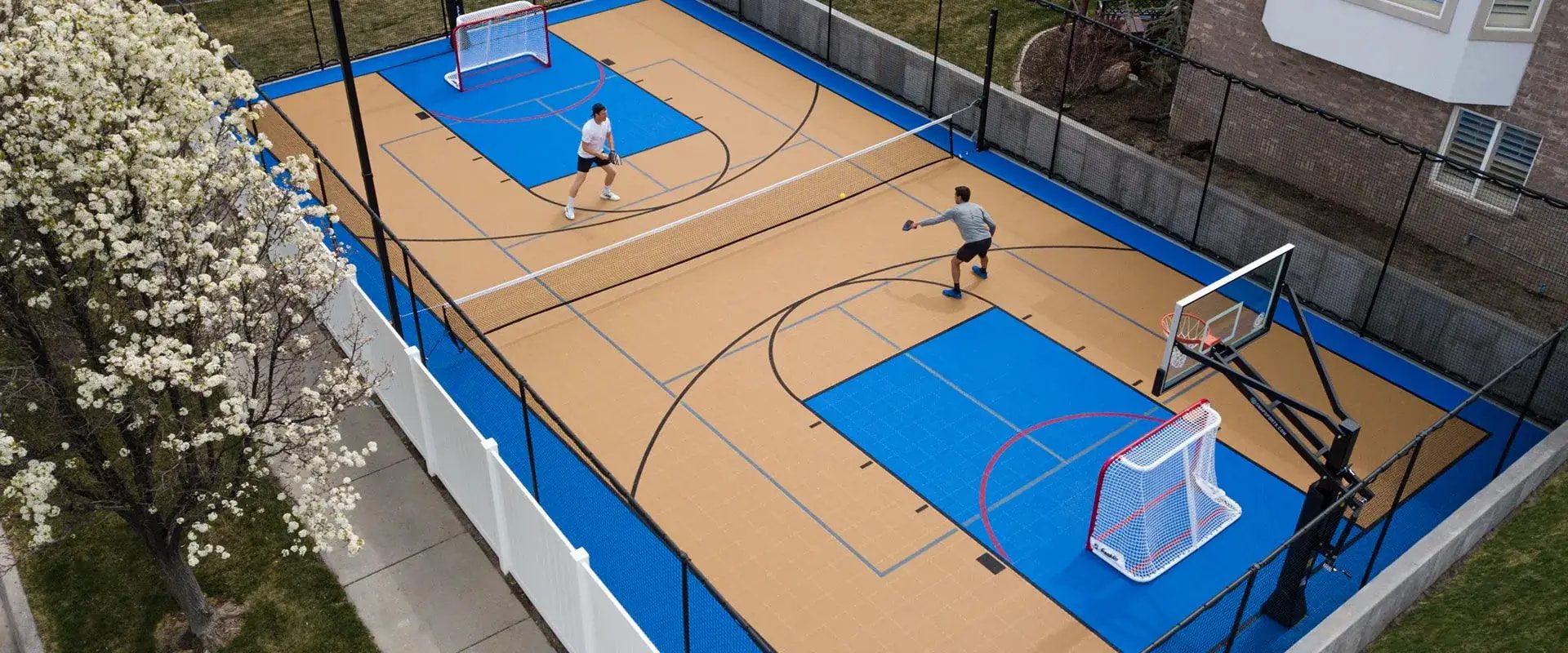Key Consider the Construction of Pickleball Courts: From Site Selection to Last Surfaces
The building and construction of pickleball courts includes an array of important factors, beginning with the choice of an appropriate website that balances ease of access with environmental considerations. Essential aspects such as court dimensions, surface materials, and drainage systems substantially affect not only the top quality of play yet also the durability of the center.
Site Choice Standards
When starting the building and construction of pickleball courts, it is essential to nail down the site option standards that will guarantee optimum playability and access. The place should be easily obtainable for players, preferably positioned near houses or recreation center, to motivate involvement.
Moreover, the terrain must be level and secure, as unequal ground can lead to security threats and impact gameplay. Adequate drainage is likewise crucial; choosing a site with good water drainage will aid preserve court conditions throughout adverse climate.
Another important factor to consider is the availability of utilities. Accessibility to electrical power and water is required for illumination and maintenance objectives. Additionally, proximity to car park facilities is essential, assisting in very easy accessibility for players and viewers alike.
Ecological aspects can not be neglected; natural shade from trees can boost player convenience, while direct exposure to prevailing winds might interfere with play. Last but not least, zoning guidelines and neighborhood support must be considered to ensure that the job aligns with neighborhood guidelines and gets the backing it requires for successful implementation. By thoroughly reviewing these requirements, stakeholders can produce a welcoming and functional setting for pickleball enthusiasts.
Court Capacities and Format
To make certain optimum gameplay and adherence to guidelines, the dimensions and design of pickleball courts should be very carefully defined. A typical pickleball court determines 20 feet in width and 44 feet in length for both songs and doubles play. The advised format includes a non-volley zone, frequently referred to as the "kitchen area," expanding 7 feet from the net on either side. This location is critical, as it influences gamer positioning and shot choice - Illinois and midwest.
The internet height is established at 36 inches at the sidelines and 34 inches at the facility, developing a small dip that affects ball trajectory. Court markings are just as important; lines should be 2 inches large and distinctive in shade to guarantee visibility.
In addition, a barrier zone bordering the court is recommended, generally prolonging 5 to 10 feet beyond the sidelines and standards to suit gamers' motions and boost safety and security. Appropriate design and measurements not only guarantee conformity with main regulations but additionally enhance the total playing experience, accommodating both leisure and affordable play. Careful preparation in these locations is paramount to the successful building of pickleball courts.
Surface Product Options
Choosing the appropriate surface product for pickleball courts is crucial for ensuring ideal player performance and safety. The option of surface area can their explanation dramatically impact gameplay, including round bounce, grip, and gamer comfort.
There are several alternatives offered, each with its distinct attributes. Asphalt is a popular choice due to its sturdiness and reduced upkeep demands. It offers a strong playing surface area that can stand up to numerous weather however might call for periodic resurfacing.
Concrete is another widely made use of product, using superb longevity and a smooth finish. It enables regular sphere bounce yet can be difficult on players' joints, making it less desirable for long-lasting play without appropriate padding.
For those looking for enhanced convenience and shock absorption, supported acrylic surfaces present a sensible alternative. These surfaces combine a base layer with an acrylic overcoat, giving boosted grip and a softer feel, which is beneficial for reducing the danger of injuries.
Last but not least, artificial turf is getting grip, particularly for multi-purpose facilities. Its versatility and reduced upkeep needs make it an eye-catching choice, though it may not supply the exact same round response as typical hard courts. Cautious consideration of these alternatives will ensure an optimal having fun environment.
Drain and Lighting Considerations
Proper drainage and efficient lights are important parts in the building and construction of pickleball courts, dramatically affecting both playability and safety and security. Ample drain systems protect against water build-up, site which can lead to unsafe surface areas and damages to the court framework.
Lights is just as critical, particularly for courts meant for evening usage. The placement of illumination components need to be tactically planned to eliminate darkness and give even distribution of light across the court.

Last Finishes and Maintenance
After attending to drain and lights factors to consider, interest transforms to the check this site out last coatings and recurring upkeep of pickleball courts. Illinois and midwest. The choice of surface product is crucial, as it affects both playability and resilience. Typical alternatives include acrylic layers and specialized sports surface areas that offer ideal traction and cushioning. These surfaces should be used in numerous layers to make certain strength versus weather condition aspects and use.

Seasonal maintenance may include resurfacing every few years, depending on usage and environmental factors. Correctly preserving webs, court lines, and bordering locations is just as vital to offer a risk-free and delightful playing experience. By purchasing quality surfaces and adhering to a structured maintenance schedule, facility proprietors can guarantee their pickleball courts remain in excellent problem for several years to find.
Final Thought
In verdict, the successful construction of pickleball courts pivots on precise interest to numerous vital aspects. Top quality surfaces and a robust upkeep routine are essential for maintaining the court's problem, improving the general experience for players and spectators alike.
Comments on “Exactly How Illinois and Midwest are Leading the Way in Pickleball Courts Layout & Building”